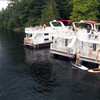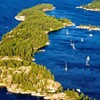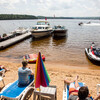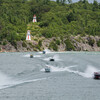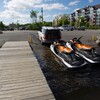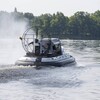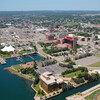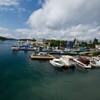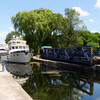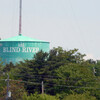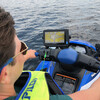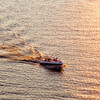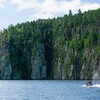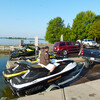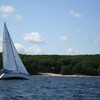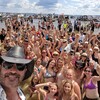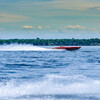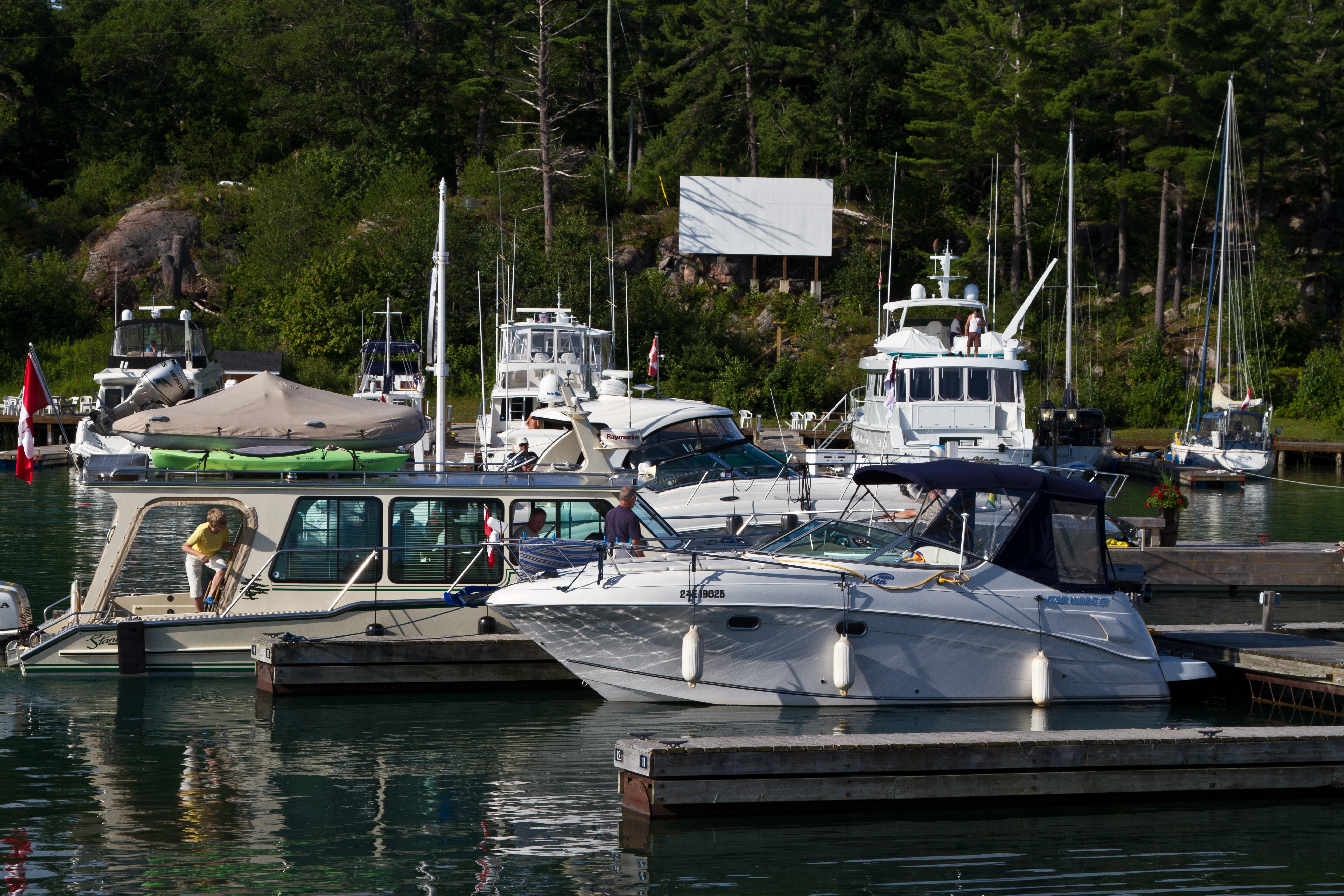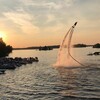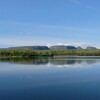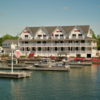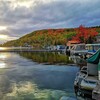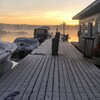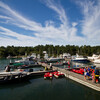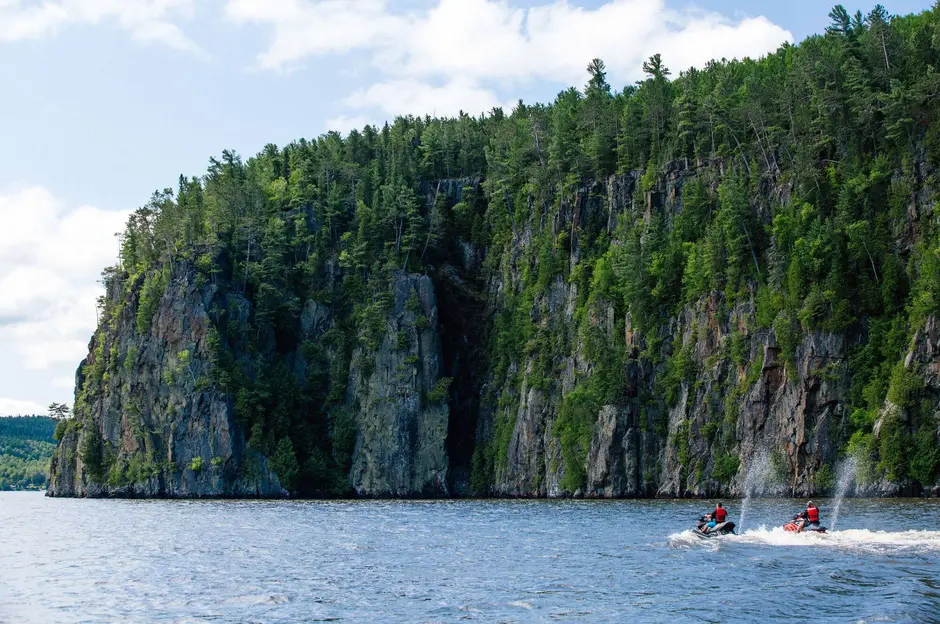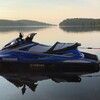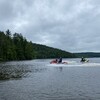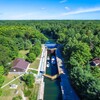
Capital Cruising
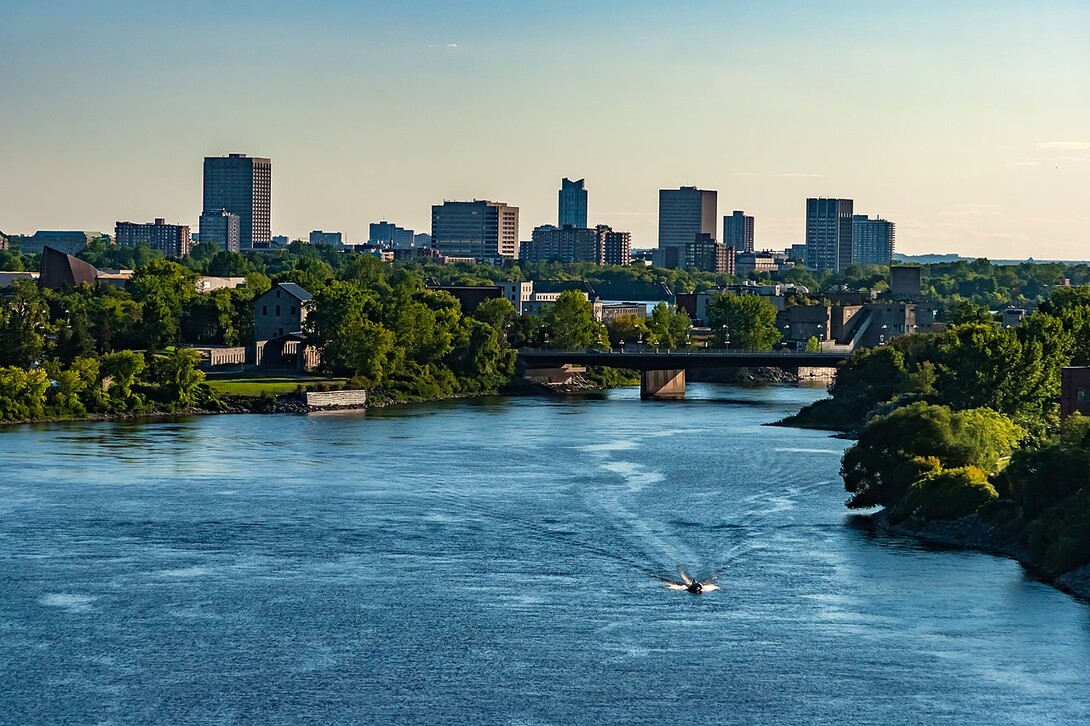
Ottawa is not only the nation’s capital, offering plenty of entertainment, dining and cultural attractions for tourists on land; it's also a wonderful place to visit by boat. And if that isn’t enough to entice you, the summer is full of festivals and events that are well worth checking out.
Accessible via the Ottawa River or the Rideau Canal, this hub has much to discover in and around its waterways and shores.
Rockcliffe
Situated on the south shore of the Ottawa River 5 km east of Parliament Hill, Rockcliffe Yacht Club is a 100-member “private co-op” style club that can accommodate transients if members are away. The club does not take reservations, so space is allocated on a first-come, first-served basis (if and when available). If you’re in the area, check for availability by calling on VHF 68.
Fuel is not available at RYC, but can be found at Rockcliffe Boathouse Restaurant and Marina, located on floating docks against the high limestone shore. Built on the site of an old ferry dock, the marina provides transient slips for boats up to 50 feet, while the restaurant offers excellent fare both inside and out.
Casino du Lac-Leamy
Not exactly in Ottawa, but an interesting and entertaining side trip, if you’re boating in the area, is Casino du Lac-Leamy.
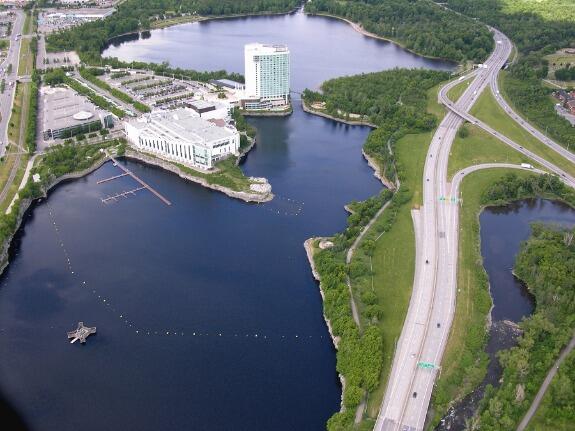
To access the marina at the casino, turn into the Gatineau River and follow the private signs and markers. Heading upriver, you will pass under two bridges. Once past the second bridge, keep the low island to starboard and proceed up to the Control Access Dock for the Casino and Marina.
At the dock, the staff will pass you an information package and you are set to head into the 40-foot-wide channel and under two more bridges – both with 19 feet of clearance – and around the northern side of a manmade lake. After circling the lake, the private markers guide you through a second narrow cut past the Casino Hotel and into a second basin.
As you pass through the cut walls, you can clearly see this lake was once a quarry. Rounding the casino, the last basin is marked with the most unusual navigation aids. A multitude of anchored yellow balls makes it quite evident where the good water is.
As you enter the final basin, the Marina du Casino Hull is to starboard past the casino.
While you must call ahead by at least 24 hours for a reservation, the marina does provide dockage for boats up to 45 feet at no cost. The docks have power and water and, of course, the reasons for the visit are just up the ramp, where you have the beautiful Hilton Lac-Leamy, a luxurious spa, several restaurants and, of course, the casino. There is also access to 85 km of trails leading to the renowned Gatineau Park.
With lots to pass away a night or two and downtown Ottawa just a five-minute cab ride away, this is a great stop-over if you’re in the area.
The Ottawa River
The view of the capital city is absolutely stunning from the Ottawa River, and it’s an utterly unique vantage point not afforded many visitors – just those exploring by boat!
About two miles from Entrance Bay and the Ottawa Flight Locks is the must-see Rideau Falls, where the Rideau enters the Ottawa River. The cascading water is not only a great picture op, but also demonstrates how the Rideau River got its name (rideau is French for curtain).
The river provides a wonderful panoramic view to many of the major attractions in Ottawa. One of the first city sights from the river is the Prime Minister’s Residence at 24 Sussex Drive. Just below the Macdonald Cartier Bridge is Rideau Hall, the Governor General’s Residence. After passing under the bridge, you will have an impressive view towards Parliament Hill. Just before the Alexandra Bridge is the Royal Canadian Mint building with its wonderful stone architecture.
As you pass under the Alexandra Bridge, first the Parliament buildings on Capital Hill come into view, then the Rideau Canal flight locks and the Chateau Laurier. Quite prominent on the opposite bank due to its modern architecture is the Museum of Civiization. The Federal Court and the Supreme Court of Canada also overlook the river.
On the Quebec side of the river in Gatineau is the Hull Public Wharf and the Hull Marina, which handles transient boats. The facility has 100 slips and is managed by Club de Yachting Portage Champlain. Visitors are asked to call ahead by cell phone or VHF to reserve a slip prior to arriving. While fuel is not available, a floating dock on the public wharf handles pump-outs. The floating docks have 30- and 50-amp power and water hookups. You will also find a picnic and barbeque area.
The docks have a security gate and staff operates the office until 11 pm. A lounge area and washrooms, showers and laundry are available to visiting boaters in the clubhouse.
Downtown Ottawa & The Flight Locks
The fight of eight connected locks at the heart of Ottawa raise boats 79 feet from the Ottawa River and mark one end of the Rideau Canal. They are truly a crash course in boat handling and lock management, but are definitely worth transiting for both the experience and spectacular view. Boaters should leave the better part of a day to moving through the locks, especially on busy summer weekends. Before, during or after the locking, you will also have time to purchase lock and mooring passes for the day or season, based on the size of your boat.
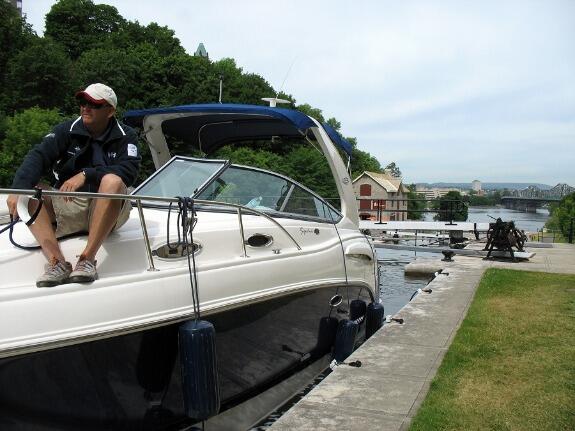
Coming out of Lock 8 and heading under the Plaza bridge, visiting boaters can dock during the day on the northeast side of the canal, pulling up just past the commercial tour boats.
The National Arts Centre for the performing arts is across the canal, the National Gallery of Canada is down the street back towards the Ottawa River, and a short walk takes you to Parliament Hill. There, you can tour the many statues that memorialize Canada’s leaders, climb the Peace Tower, listen for the noon gun, or see the changing of the ceremonial guard.
Further afield, the Ottawa area is home to more than a dozen museums dedicated to everything from art, agriculture and aviation to science, technology and war.
If you and your crew are sticking around town for a while, check performance schedules for various cultural and musical events, like the Ottawa Jazz Festival in late June and early July or the world’s second-largest blues festival, held every July for 11 days.
In the summer, Ottawa is a city where people like to spend time outdoors, so there are plenty of cafés and restaurants to choose from, ranging from Irish pubs to Cordon Bleu dining.
One of the enduring attractions in downtown Ottawa is the ByWard Market, where boaters can stock up on fresh produce or flowers, pick up fresh bread or pastries at the Moulin de Provence, and buy meat or cheese at a specialty shop. There are sure to be street entertainers, plus the classic Ottawa pastry, Beavertails, for crew members with a sweet tooth. There’s also lots of shopping at small, unique boutiques, and larger, more familiar stores in the Rideau and Sussex Street neighbourhood.
To pay homage to canal-builder Colonel By, head up the northeast side of the flight locks to Major’s Hill Park to see By’s statue and the site of his home. For a lesson on the history of the Rideau, its construction with little more than hand tools and human labour, and the work of the Royal Engineers, visit the Bytown Museum about halfway up the flight locks on the southwest side in the commissariat building (the oldest building in Ottawa).
Dow’s Lake
Once through the flight locks and headed up the canal from downtown Ottawa, navigation is relatively straightforward, with a 10 km/h speed limit. Boaters are encouraged to leave no wake, and some no-wake zones are posted, usually with floating markets.
There’s plenty to see along the way to Dow’s Lake, heading under the MacKenzie King and Laurier Street bridges, then past City Hall, the old Drill Hall and the University of Ottawa. Parks and cycling and walking paths line both sides of the canal.
After the sharp turn, boaters head for the Queensway fixed bridge. This is followed immediately by the Pretoria Street lift bridge, which opens on demand but is closed during weekday rush hours. If your boat has more than 10 feet of height contact the Preteoria Street bridgemaster well in advance, by radio on channel 14. With traffic stopped, the bridge is only lifted as high as necessary for your boat. So prepare to head through when the control light turns green.
The canal curves westward past Lansdowne Park stadium, former home of the Ottawa Rough Riders football team and now redeveloped with a great emphasis on green space along the canal.
Once through the arches of the Bank Street Bridge, the canal begins to narrow as it heads to Dow’s Lake. There’s a bike and jogging path on the north side of the canal, but the south side is wooded. A view of Dow’s Lake opens up as you pass under the Bronson Street Bridge.
During construction of the Rideau Canal, the lake was excavated to replace Dow's Great Swamp that was once described as a “dismal wilderness.” Today Dow’s Lake is often filled with canoes, paddleboats and kayaks rented by locals and visitors alike.
To reach Dow's Lake Pavilion, which is built out into the lake itself, favour the starboard shore until about halfway across the lake, then head for the pavilion, north of a grouping of docks.
It’s always a good idea to call ahead for transient docking reservations at this popular stop, where boaters will find transient dockage with shore power, gasoline and diesel fuel, ice and pump-out facilities, as well as small boat rentals. There are also washrooms, showers, and three restaurants offering a wide choice of styles and decks overlooking the lake and surrounding area.
There are no repair or service facilities at the Dow's Lake Pavilion marina, but many of the cruising boaters who spend their summers on the docks arrange for mobile sevie an store their boats elsewhere for the winter. The docks, which accommodate boats up to 50 feet, are well-built and usually quiet. Provisions are easily accessible by taxi and Ottawa’s airport, rail and bus connections make crew changes simple.
Hog’s Back Falls
A bit further afield, through suburban Ottawa, past Carleton University and Hartwell Locks (nine and 10), is the scenic Hog’s Back area that is popular with visitors and locals alike.
As with many of the locks on the system, the former lockmaster’s house at Hog’s Back is now used as an office. Other houses that were occupied by lockmasters during the early days of the canal are rented out – sometimes to current lockmasters – or used as museums.
As the door to Lock 11 opens, Lock 12 is also already open. It doesn’t lift or drop boaters, but is used as a guard lock to keep river debris and spring runoff from harming the main working lock at Hog’s Back. It is the only guard lock on the system.
The lockmaster manually “sizes” up the height of boats and determines if the bridge needs to swing. Then, as boaters move through the open lock, traffic is halted on Hog’s Back Road and the bridge swings out of the way. The bridge opens on demand on weekends. On weekdays it is closed during rush hours.
As well as its unique guard lock, Hog’s Back also has a dam with a colourful history. The Hog’s Back dam holds back almost 50 feet of water and was a crucial part of the canal system that bypassed the Rideau River in Ottawa.
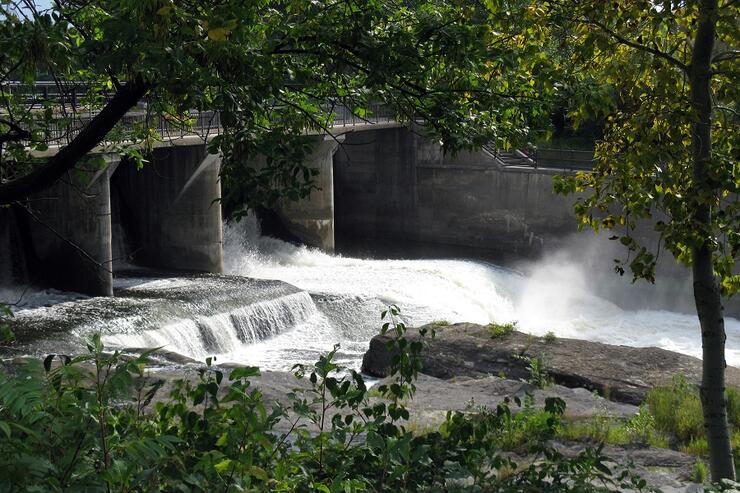
The first two dams built here during construction of the canal failed – the second one actually giving way while Colonel By was standing on it and supervising its re-construction.
After being re-engineered and rebuilt using earth, rocks and wooden cribs, the current dam – now mostly hidden behind a stand of trees – was completed in 1830 and has withstood the test of time. A walk alongside the river shows how what was once a rushing falls has been tamed into the relatively mild Hog’s Back rapids.
Much More to Discover
From here, boaters heading upstream have their first encounter with the Rideau River, widened by the dam into Mooney’s Bay, a body of water almost as big as Dow’s Lake. There is much more to discover along the Rideau Canal, with lots of history to explore, but that’s for another day.
Recommended Articles

6 Ways to Explore the Great Lakes by Boat or Cruise

Discover Northern Ontario's Top Boat Tours

A Guide to Boating the Trent Severn Waterway in Ontario 2025
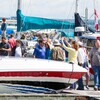
Boating Events in Ontario: A Complete Guide to Summer 2025
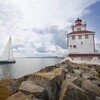
19 Charming Lighthouses to Visit in Northern Ontario
I Boated the Trent Severn Waterway and Here's What It Was Like
I Sailed the New Viking Octantis and Here's What It Was Like
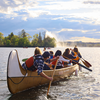
Canadian Canoe Museum
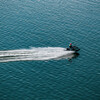
14 PWC Itineraries and Tips for Riding in Ontario
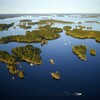
A Thousand Adventures: Boating the 1000 Islands in Ontario
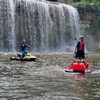
Road Tripping with your PWC
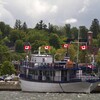
Boat Tours and Cruises in Ontario
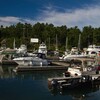
A Guide to Ontario's Marinas

5 Baller Boating Destinations in Ontario

Amazing PWC Getaway
